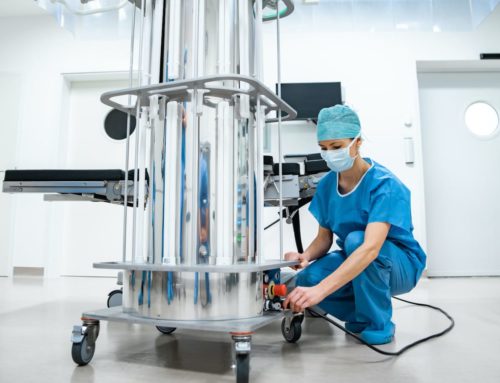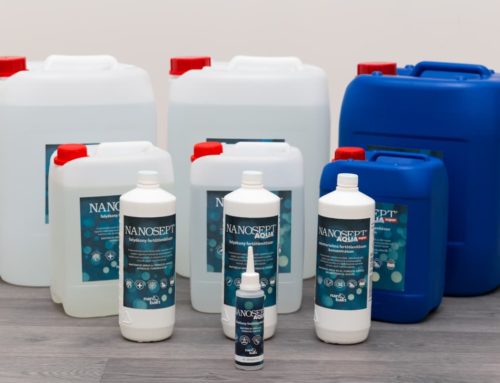A study published in the International Journal of Molecular Sciences presents several applications of nano-silver particles to help protect the health of people working in the healthcare industry as much as possible in the event of a global pandemic.
Silver is a readily available substance that is known to have microbicidal properties and does not cause side effects in the human body. Silver ions are responsible for the microbicidal effect which can elicit a wide range of antibacterial effects. Another major advantage of silver is that it has much less fear of the appearance of multidrug-resistant bacteria during its use, unlike antibiotics.
A problem with silver ions is that they bind negatively charged ions (such as chloride ions), so that when silver ions are applied directly, their microbicidal activity is shortened. This problem can be eliminated by using silver nanoparticles, which have been routinely used as microbicidal agents in recent years, as silver ions are released from the surface of the nanoparticles, which then effectively kill viruses, bacteria or fungi.
The properties of nanosilver particles make them suitable for use with high efficiency in the fight against infectious diseases. One such application is to coat the surfaces of various medical devices with nanosilver. The authors of a study published in the International Journal of Molecular Sciences summarized the applications in which professionals seek to reduce the risk of infection in healthcare institutes with the use of nanosilver.
Microbicidal properties of silver nanoparticles
The exact mechanisms of microbicidal activity of silver nanoparticles have only been explored in detail in the last few years. In the case of Escherichia coli (E. coli), for example, it has been observed that the bacterium is killed by free radicals released from silver nanoparticles; an important role is also played by the redox reaction in which silver ions released from silver nanoparticles cause damage to bacteria. Silver ions are released from the surface of silver nanoparticles smaller than 10 nanometres, resulting in much higher antibacterial activity than if the bacterial cell wall simply contacted the surface of the nanoparticle.
Based on research results, it can be said that silver nanoparticles can be used with good efficiency against many infectious diseases. The particles have a particularly high antibacterial effect against E. coli strain O157:H7, which is responsible for severe food poisoning cases. Bactericidal activity has also been demonstrated for Streptococcus pyogenes, Salmonella enterica, Staphylococcus aureus and Enterococcus faecalis. Silver ions are particularly effective against Gram-negative bacteria, but are much less effective against Gram-positive bacteria due to their solid cell wall.
The antiviral effects of nanosilver particles
The antiviral effects of nanosilver particles have been studied much less so far than the bactericidal effects against bacteria, so these mechanisms are not yet fully elucidated today. (The scientific results so far on the virucidal effect of nanosilver particles have been summarized in this article: How does nanosilver exert its virucidal effect?)
In very brief, the silver nanoparticles contact the surface of the virus and physically prevent the virus from getting in contact with the host cell to be infected. Studies to date have also shown that the size of silver nanoparticles is essential for the efficacy of antiviral activity, as well as antibacterial activity: silver nanoparticles of 25 nanometres or less have been shown to be effective in eliminating arena viruses. Silver nanoparticles between the size of 7 and 20 nanometres are effective against herpes simplex virus types 1 and 2 and parainfluenza virus type 3. It has also been found that the antiviral effect decreases with increasing diameter of the nanoparticle, so that the nanoparticles must be as small as possible to exert the most effective antiviral effect.
How can nanosilver be used to protect healthcare workers?
Emerging infectious diseases are those that are appearing in the human population as new (such as the new type of coronavirus that causes the current pandemic), as well as infectious diseases that have been present in the human population in the past, but their incidence or geographic spread is growing rapidly.
Previous examples of emerging infectious diseases on the new type of coronavirus include ebola (EVD), Middle-Eastern respiratory coronavirus (MERS-CoV), virus causing severe acute human respiratory disease (SARS-Cov), methicillin-resistant Staphylococcus aureus (MRSA) and cholera caused by the bacterium Vibrio cholerae.
Healthcare professionals involved in the care of the infections just mentioned are at increased risk of infection. This was the case, for example, during the West-African cholera epidemic, where more than 300 health workers died from the infections, such as the MERS-CoV epidemic, and especially such as the current pandemic-causing SARS-CoV-2.
How can the microbicidal and antiviral effects of silver nanoparticles, described in detail above, be used to protect healthcare workers? The authors of the article mention several possibilities in detail: they point out that since the use of silver nanoparticles releases not only free silver ions but also reactive oxygen free radicals that cause oxidative stress, it is suitable for reducing the risk of infections for healthcare workers.
To avoid contact with pathogens, healthcare workers usually also wear protective clothing on the surface of which pathogenic microbes can remain active. It was therefore necessary to develop effective protective clothing, backed up by scientific findings, which provided real protection against the above mentioned pathogens. Special care needs to be taken also to ensure that healthcare workers do not become infected when removing protective clothing.
In their article, Shingo Nakamura et al. report about a research on a newly developed microbicidal / antiviral sheet containing fibrous nanosilver particles on the outer surface that could be used, among other things, to make state-of-the-art protective clothing.
The results showed that silver nanoparticles were able to bind directly to all wool, paper and garment surfaces that were characterized by a nanofiber-like surface structure. These surfaces have an enhanced microbicidal effect: they have been proved to be effective in eliminating E. coli bacteria and H1N1 influenza-A viruses.
Thanks to the above, nanofibers coated with nanosilver particles can be used in the production of various protective clothing, plastics and papers. They can be used to create clothes, protective coats, masks, gloves and other garments for doctors and nurses.
Some other applications where nanosilver particles can be great to protect healthcare workers:
- Materials covering the wound surface
- Catheters (such as drug delivery catheters)
- Endotracheal tubes



